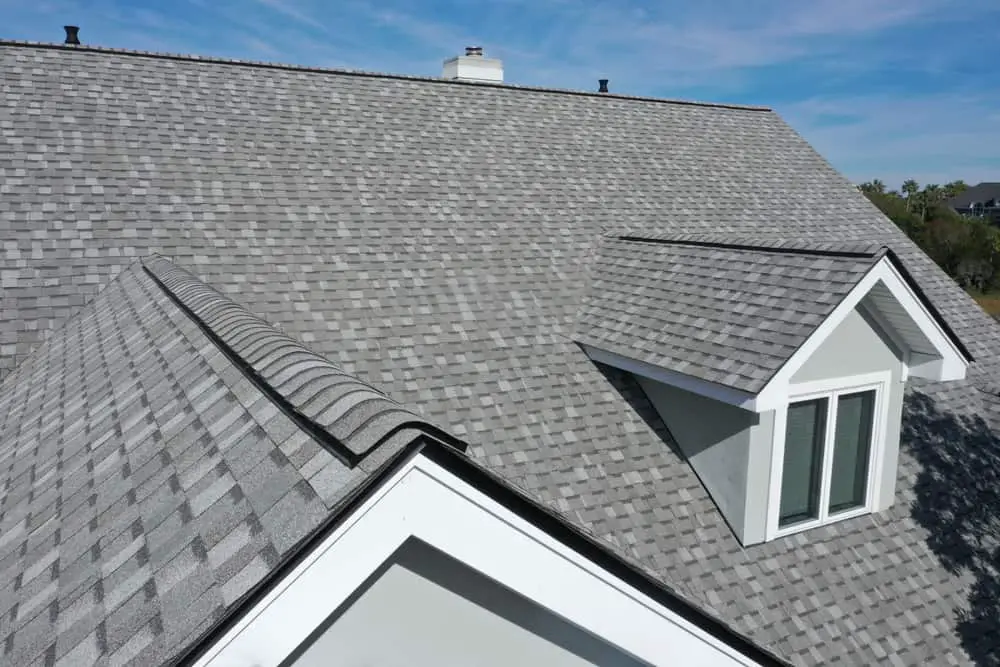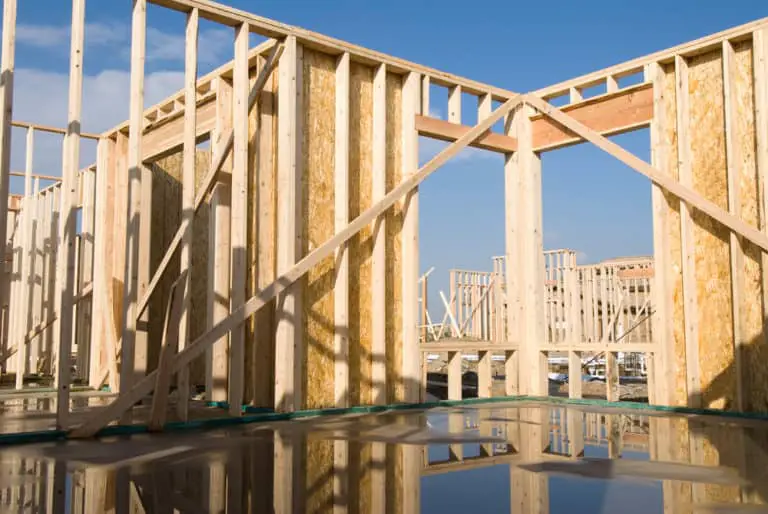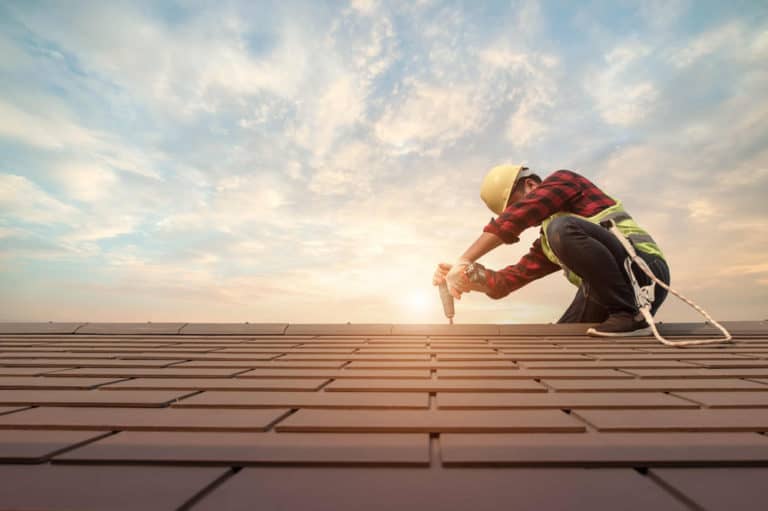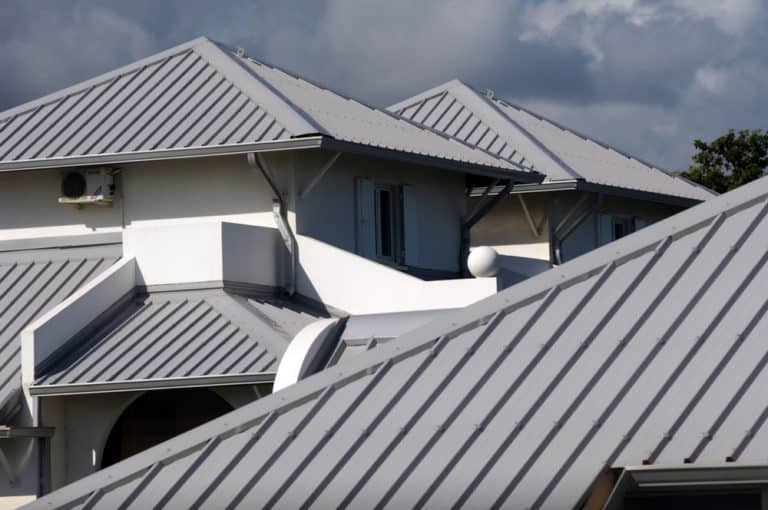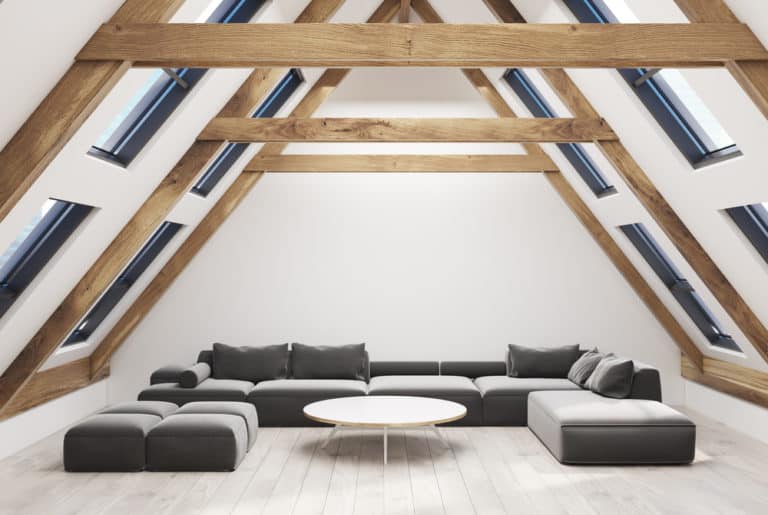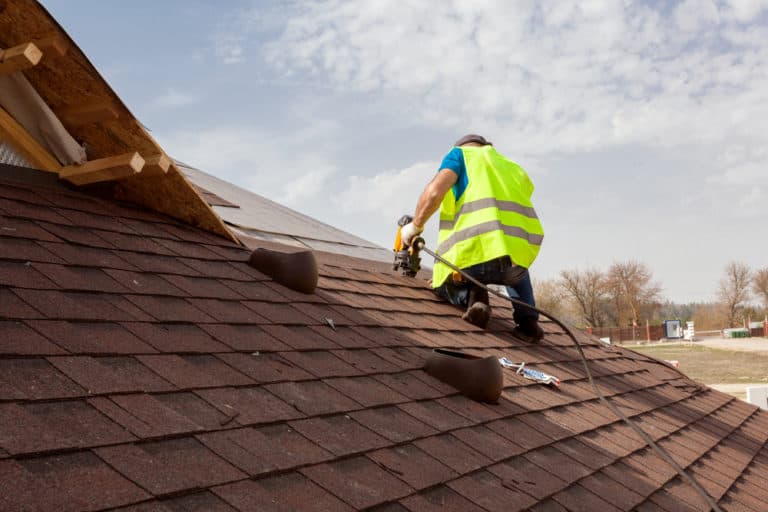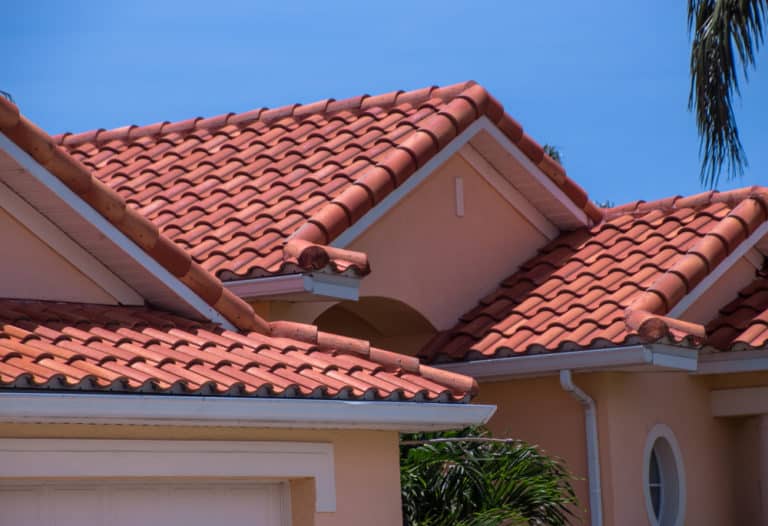Metal Roof Vs. Shingles In Hot Climate
Your chosen roofing material in a hot climate can make all the difference when it comes to the heat management of your home. While you might think the roof’s material will make no difference to your home’s temperature, this can be one of the biggest factors in regulating your home’s temperature.
A metal roof is a far better option in a hot climate than a roof made of shingles. This is because shingles absorb an enormous amount of heat transferred into the house below. Metal roofs can reflect a greater amount of heat, keeping the house cooler.
Both roofing types have their advantages and disadvantages. There are benefits to be enjoyed with each type of roof, particularly when referring to the region. Metal roofing may be a slightly less appealing option in terms of aesthetics, but it will serve you best when it comes to the management of heat in the home.
Metal Roof Vs. Shingles In Hot Climate
It may seem highly surprising, but metal roofing is considered a far better option when it comes to roofing for a house in a hot climate. Because of the nature of the materials used, shingles have a tendency to absorb a huge amount of heat from the sun.
The heat absorbed by an asphalt roof will, in turn, heat up the attic space and, subsequently, the rest of the house. This heat transfer from the roof into the house not only causes the house to become significantly hotter but can potentially cause damage to the roof’s surface and internal structure.
The temperature increase in the house through absorption via the roof can be anywhere between twenty and twenty-five degrees.
Heat absorption by the roof’s surface will also cause the asphalt to become damaged over time, hastening the need for replacement or repair. This can ultimately cause significant increases in the overall cost of the roof in the long term.
Metal roofing is naturally better able to reflect heat than asphalt (as opposed to absorbing it), and so this material will ultimately perform better in a hot climate. According to testing, a home with a metal roof can be up to one hundred degrees cooler than a home with asphalt roofing.
The performance of the two roofing materials will differ drastically according to the region in which they are used. Because asphalt roofs absorb more heat and metal roofs tend to reflect it, this makes each type of roof better suited to different weather conditions.
Heat absorption is useful in a cold climate where every bit of warmth is needed to keep the house at a comfortable temperature. In this case, asphalt roofing would be highly desirable. The opposite is true in a hot climate, however, because one wants as little heat absorption into the house as possible in order to maintain a desirable internal environment.
Keeping Your House Cool
Metal roofing does an excellent job of keeping a house cool in a hot climate, potentially reducing the need for cooling by ten to fifteen percent. It does this by reflecting the sunlight from its surface instead of absorbing it.
This is what makes it different from asphalt because asphalt absorbs the sun’s heat as opposed to reflecting it. If shingles are black or dark in color, they will have a tendency to absorb more heat than if they were a lighter color.
Metal roofing is generally lighter in color, and this also helps to reflect more heat than the darker asphalt shingles. New, light-colored metal roofing will be highly effective at reflecting heat, and its heat-reflecting capabilities will be further improved through the use of proper ventilation and insulation.
There are also specially-designed sealants on the market that help to cool down the roofing material even further.
Keeping Your House Warm
If you live in a cold region, your objective is to keep your house warm throughout the year. Shingles are an excellent roofing material choice in this context due to their excellent heat-absorbing capabilities.
Because they absorb large amounts of heat from the sun and radiate this heat into the rest of the house, shingles will play a major role in helping to keep your house warm. However, asphalt shingles generally do not do well in snowy conditions.
The heavy layers of wet snow are not good for this material, and the cold temperatures can cause cracks in the asphalt. As a result of the cracks, you may end up with a leaking roof.
While asphalt shingles do a good job of keeping the house warm in winter, metal roofing can achieve the same result through the use of proper insulation. To add to this, the savings gained through a reduced need for cooling in summer by having a metal roof will usually offset a slightly higher need for heating in the winter.
This means that the overall energy spendings through the year will be significantly lower than it would be with a roof made with shingles.
When it comes to handling snow, metal roofs usually perform better, as the snow is easily able to slide off the roof, and the extremely cold temperatures will not harm the metal.
Cost Comparisons
The cost of your chosen roofing material is always a major deciding factor. The cost of metal roofing is usually significantly higher than that of roofing shingles. Overall, a metal roof may cost as much as triple the price of a roof made of shingles.
This is due not only to the higher cost of the material but also to the need for specialized knowledge and installation expertise. The extra labor required will always drive up the cost.
Shingles are significantly cheaper as material but do require extensive labor to install.
This higher initial cost can be extremely offputting to homeowners; however, one must bear in mind that this initial expenditure will be offset by numerous factors.
Firstly, a metal roof can last up to three times longer than one made with shingles. Metal roofing also requires far less maintenance. Secondly, because a house with a metal roof will require far less electricity to cool, the energy costs over the years will be significantly reduced.
As a result, despite a higher initial cost, the overall cost throughout a longer period of time will ultimately balance out.
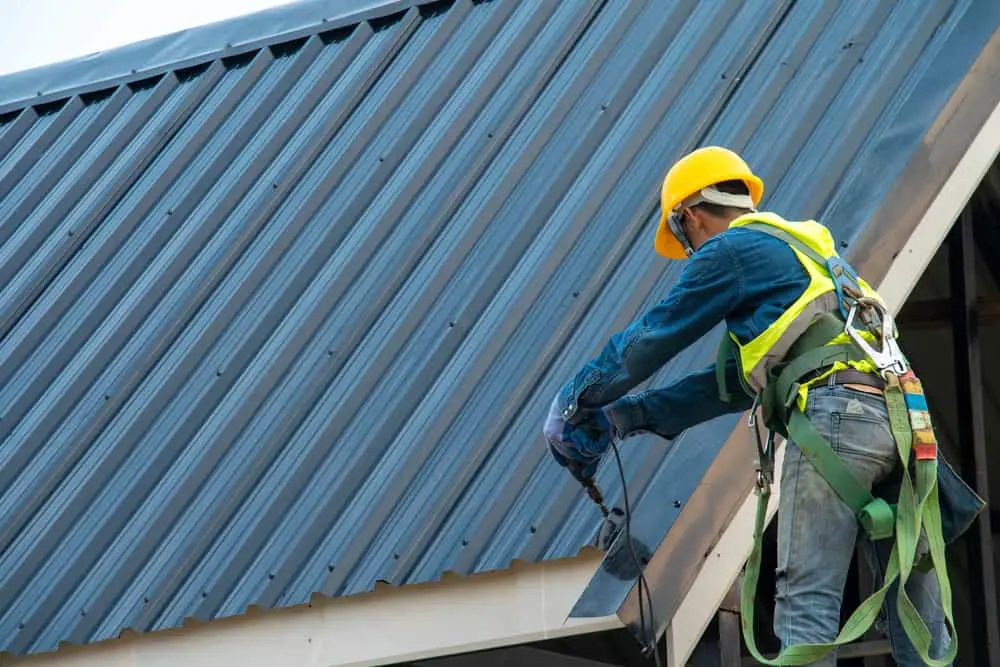
Maintenance
While no roof is completely maintenance-free and maintaining your roof is an inevitable part of owning a home that will ensure its longevity overall, certain roofing materials require more maintenance than others.
The majority of the maintenance for asphalt shingles occurs around penetrations through the roof. In order to ensure these penetrations do not result in leaks, specific adhesives, metal flashing, and sealants are used.
With time, the sealants tend to deteriorate and so need to be replaced with some regularity. Other maintenance with this type of roof involves the rubber pipe boots, which have a tendency to break down with age and need replacement.
With metal roofing, the rubber pipe boots are usually covered in metal which protects them from sun damage. This significantly lengthens their lifespan, reducing the need for maintenance overall. The penetrations through metal roofing are protected with flashings made of metal that matches the roofing material.
The use of flashing assists in keeping the roof as watertight as possible.
The maintenance required for shingle roofing is not enormous, but it is certainly more than that required for metal roofing. This is another factor to consider when deciding between roofing types.
Durability
Durability is an extremely important consideration in roofing. A roof’s ability to withstand adverse weather conditions will greatly improve its longevity, and so the durability of your roofing material will ensure that the roof does not need replacement earlier than would ordinarily be necessary.
Asphalt shingles are absorptive by nature. As shingles absorb water that freezes and dries due to changes in the weather, the structure of the actual shingles begins breaking down.
Conversely, metal is a non-absorptive material. Metal roofing is also designed to be installed with fastening clips that allow the roofing material to move with the temperature changes, ultimately preventing damage to the metal.
Overall, while the average life expectancy of metal roofs is between fifty and seventy years, asphalt shingles tend to last no longer than twenty-five years.
Fire Resistance
With metal roofing, the ability of the material to withstand fire depends on the type of metal. While copper or steel is better able to survive a fire, aluminum roofing will most likely melt if exposed to fire.
Shingles are relatively fireproof, but this again depends on the materials from which they are made. Organic timber shingles are far less resistant to fire than shingles made of asphalt and fiberglass composite. Asphalt shingles are able to withstand fire to a certain degree, but metal roofing is far more resistant to fire overall.
Soundproofing
Due to the relative softness of the material, shingle roofing is inherently quieter than metal roofing overall. Metal roofing tends to have a bit of a bad reputation when it comes to noise, bringing to mind the loud rainfall of bare tin roofing. This roof-type is actually far quieter than most people think.
The use of insulation is a great way to reduce noise with either type of roof, especially if an insulated attic forms part of the roof system.
Aesthetics
The aesthetic appeal of your roofing material plays a significant role in your potential roofing choice, as the roof forms a large portion of the entire building. This is, however, a highly subjective matter.
Asphalt shingles can be manufactured to resemble different roofing materials such as wooden shakes, concrete tiles, or even slate tiles. The nature of the material and its coloring has the added ability to give overall depth to a roof.
Metal roofing traditionally comes in a variety of solid colors, and this too can be made to imitate other types of roofing. Metal roofing always has a sort of metallic sheen to it, whereas shingles do not.
Metal roofing can come pre-painted, or you can paint it after installation. Either way, lighter colors are always better in order to reflect the most heat.
Materials
The majority of metal roofs are made using steel. However, aluminum, copper, tin, and zinc are the other metals that are commonly used in roofing. Some metals are better suited to different environments, such as aluminum that is better able to withstand high levels of humidity than steel.
Shingles can be made from one of a few different types of materials. Timber shingles were extremely popular in the past, but these have been exceeded in popularity by asphalt shingles. Asphalt shingles can either be a fiberglass composite or an organic shingle made using paper with a coating of asphalt.
The fiberglass composite shingles are more popular due to their lower price, improved fire resistance, and a higher degree of flexibility. Organic asphalt shingles tend to make use of higher amounts of asphalt, and so they are usually more durable.
However, this option is less environmentally friendly, and the paper used in organic shingles makes them more susceptible to fire.
Environmental Considerations
It’s important to bear in mind that all metals used for roofing are environmentally friendly because they are often made partially from recycled metal, and this can also be recycled again after it has served its purpose.
The recycling of asphalt shingles is not yet a common practice as this is an expensive process that does not make financial sense. As a result, asphalt shingles usually end up in landfills.
Conclusion
On the whole, metal roofing is by far the better option in a hot climate. Properly installed metal roofing will far outlast any shingle roof, and it will also perform far better in terms of reflecting heat away from the building.
Shingle roofing is highly absorptive of heat, and it will cause significant amounts of heat to enter your home. Metal roofing, on the other hand, is highly reflective of heat, and so it will prevent the building from becoming hotter, ultimately reducing the need for cooling.

